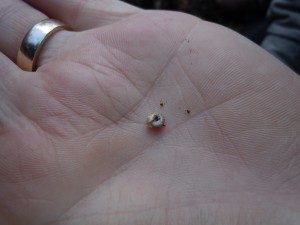Monitoring for mollusks
By Taylor on February 27, 2015 in Blog

The Iowa Pleistocene snail is a considered a glacial relict species.
The Iowa Pleistocene snail (Discus macclintocki) is a small mollusk indigenous to the north central United States.
Unfortunately, it’s an endangered species.
Fortunately, the United States Fish and Wildlife Service (USFWS) and INHF have teamed up to protect these little guys.
Six natural resources technicians will be monitoring the snails’ habitat on public and private land in the Driftless Area of Iowa, Wisconsin and Illinois and the Lost Mound Unit of the upper Mississippi. This is part of an effort to conduct surveys of potential habitat and to monitor all of the historically occupied sites–there are 31 of them–to document the current status and distribution of snail colonies.
Read on for more Pleistocene snail facts:
Diet
As herbivores, the snails prefer to munch on birch and maple leaves.
Habitat
They live on (typically north facing) algific talus slopes. Algific slopes occur where air circulates over underground ice, which produces a constant stream of cold moist air through vents on the slope. The vents are usually covered with a layer of talus (rock debris) and leaf litter.
Monitoring
Because the rock debris is so unstable on the slopes, it’s possible that shifting can crush these snails. The technicians hired will monitor the snails while being minimally intrusive.
